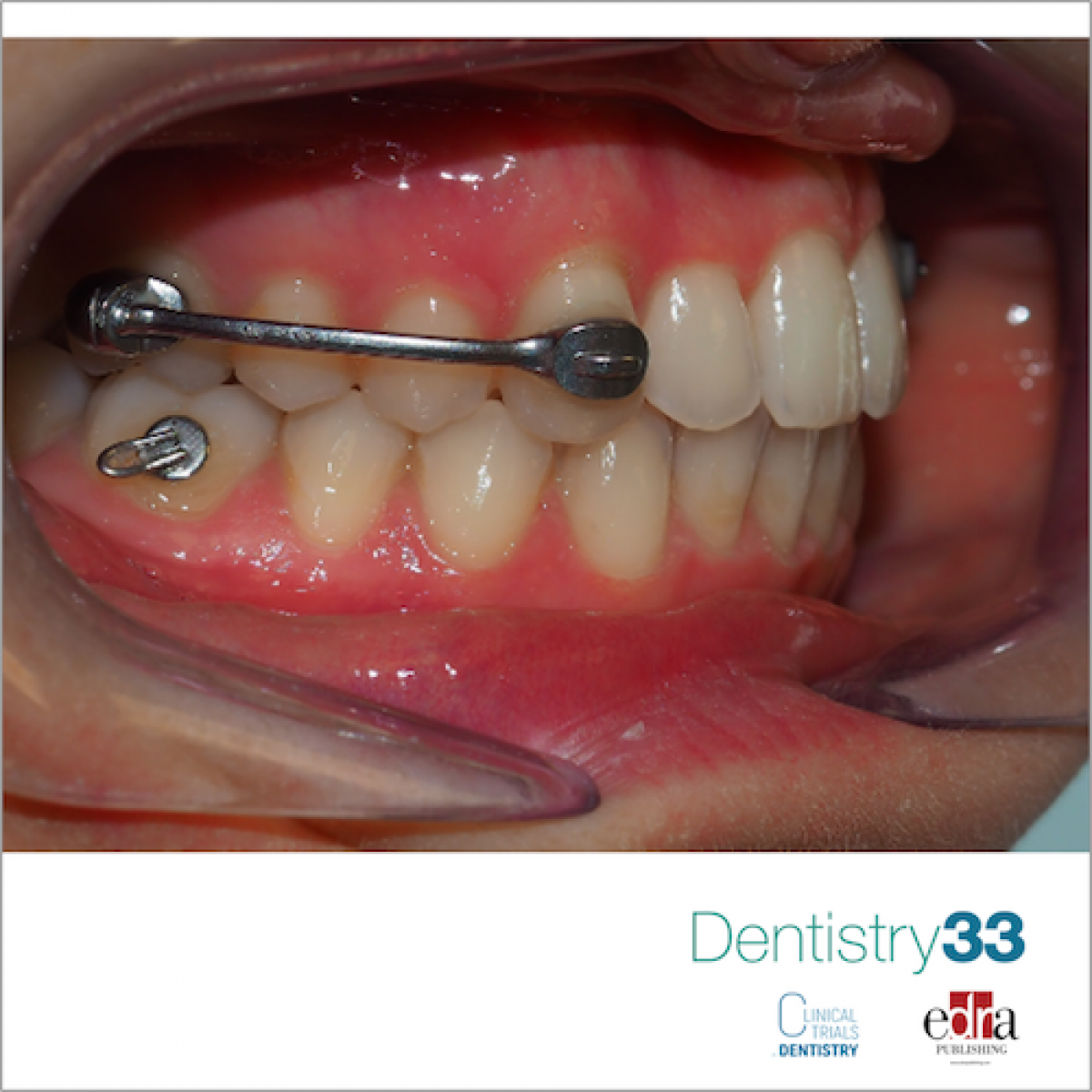
Comparison of shorty and standard Class II Carriere Motion appliance
Davide Elsido
The Carriere Class II 3D Motion appliance (CMA; Henry Schein Orthodontics, Carlsbad, Calif), composed of nickel-free stainless steel formed via injection molding, consists of two bracket pads connected by a rigid bar. It is one of the compliance-dependent Class II appliances, such as headgear. In both standard and shorty versions of CMAs, the posterior bracket pad is bonded to the maxillary first molar with a ball and socket joint to allow for tipping and rotation of the maxillary molar. The anterior bracket pad, which has a hook, is bonded to the maxillary canine in the standard CMA and to the maxillary first premolar in the shorty CMA. The simple design makes CMAs more comfortable than the Forsus appliance. To produce distal force on the posterior maxillary segment, elastics are worn from the anterior hook to a button or hook on the mandibular first molar. Anchorage is recommended for the lower arch (Essix retainer, Lower Lingual Holding Arch (LLHA), etc) to prevent side effects associated with Class II elastic wear, including flaring of the mandibular incisors. The standard CMA is recommended in most situations, while the shorty CMA is suggested for cases with unerupted or ectopically erupted maxillary canines.
Since Carriere Motion is becoming every day more and more used, an article was published to compare treatment effects of the standard and shorty Class II Carriere Motion appliances (CMAs) on adolescent patients.
Fifty adolescents with Class II malocclusion formed group 1, who were treated with shorty CMA (n = 25, 12.66 ± 1.05 years), and age- and sex–matched group 2, who were treated with standard CMA (n = 25, 12.73 ± 1.07 years). Treatment effects were analyzed by tracing to compare pretreatment (T1) cone-beam computed tomography (CBCT) images with post-CMA (T2) CBCT images.
In groups 1 and 2, maxillary first molars showed significant distal movement from T1 to T2 (1.83 ± 2.11 mm and 2.14 ± 1.34 mm, respectively), with distal tipping and rotation in group 1 (6.52° ± 3.99° and 3.15° ± 7.52°, respectively) but only distal tipping (7.03° ± 3.45°) in group 2. Similarly, in both groups, the maxillary first premolars experienced significant distal movement with distal tipping but no significant rotation. In group 1, maxillary canines did not undergo significant distal movement. In both groups 1 and 2, mandibular first molars experienced significant mesial movement (1.85 ± 1.88 mm and 2.44 ± 2.02 mm, respectively). Group 1 showed statistically significantly less reduction in overjet and less canine distal movement with less distal tipping than group 2 (α < .05).
As conclusions, the shorty CMA achieved Class II correction similarly to the standard CMA, with less change in overjet and distal tipping movement of the maxillary canines.
For additional information: Three-dimensional cone-beam computed tomography comparison of shorty and standard Class II Carriere Motion appliance
 Tag
Tag
 Read more
Read more
Editorials 10 October 2025
With proud smiles and crisp white coats, ninety-three learners from the DDS Class of 2029 and the International Dentist Pathway Class of 2028 marked the start of their dental careers at the UCSF...
Periodontology 10 October 2025
Continuous professional development (CPD) in Periodontology refers to the overall framework of opportunities that facilitate a life-long learning practice, driven by the learner-practitioner and...
TheraBreath, the #1 alcohol-free mouthwash brand in the U.S.*, has introduced a new line of dentist-formulated, clinically tested toothpastes designed to support professional oral care...
News 10 October 2025
New officers and trustees were installed at the Minnesota Dental Association’s Leadership Conference on September 19 in Minneapolis.
News 10 October 2025
Smartee Denti-Technology today announced that Professor Gang Shen, its Chief Scientist and Executive President of TaiKang ByBo Dental, has once again been named to the World’s Top 2% Scientists...










